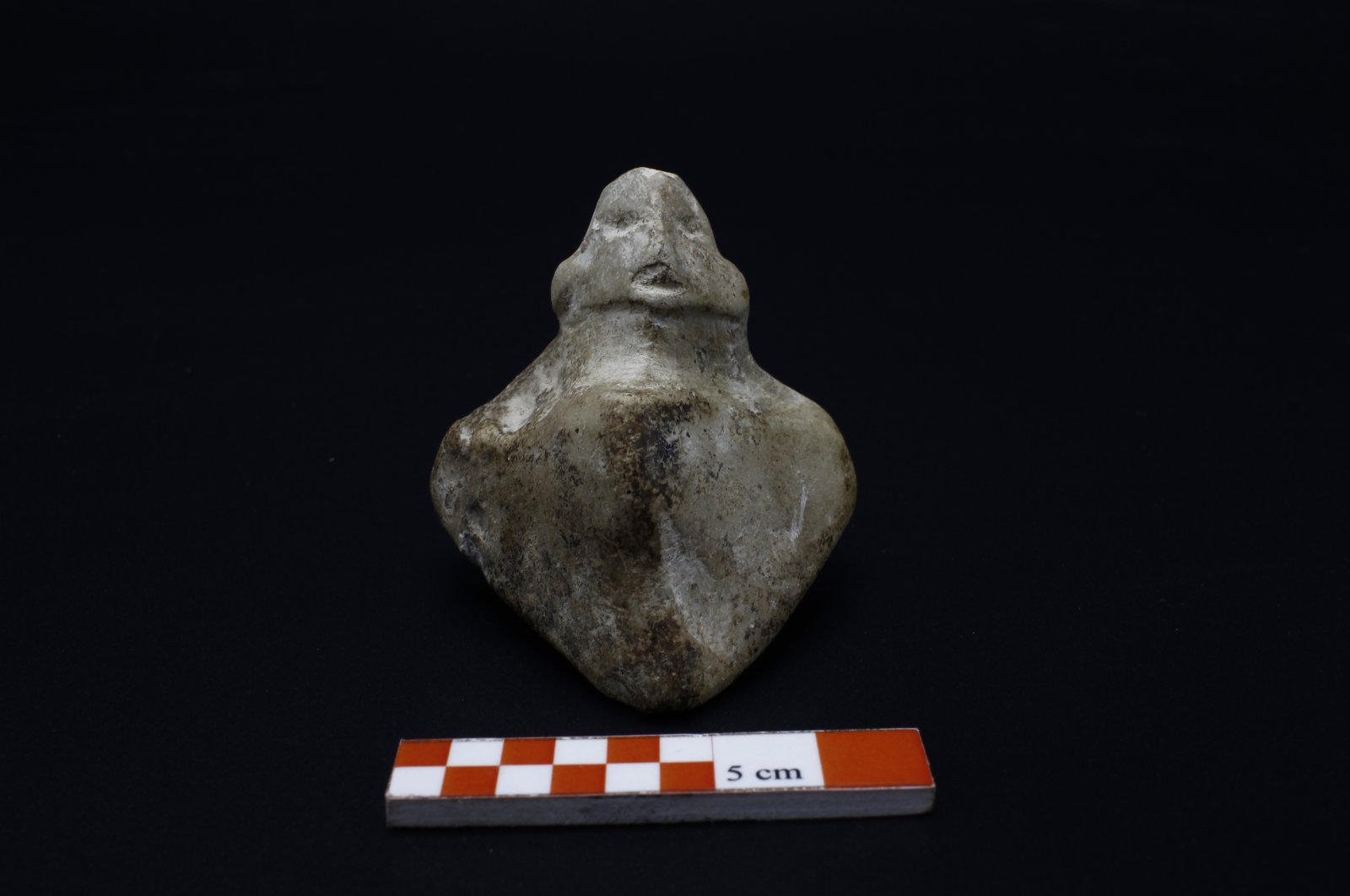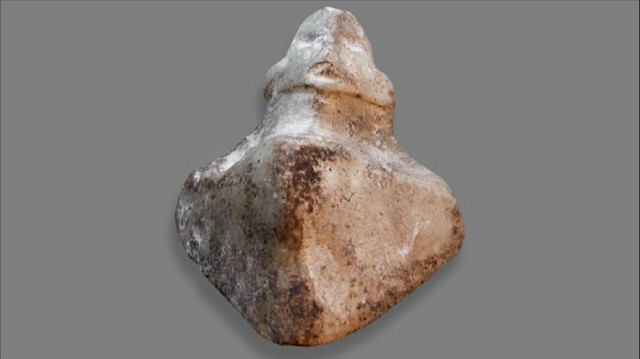In the 29th season of excavations at Çatalhöyük, one of Anatolia’s earliest urban centers located in the Çumra district of Konya, Turkey, a remarkable discovery was made. An 8,500-year-old marble statuette, standing only 5 cm tall, was unearthed. This prismatic figurine, with its indeterminate gender and distinct human shape, adds a new dimension to the understanding of this ancient Neolithic city.
A Significant Find in a Neolithic City

The Neolithic City of Çatalhöyük, dating back approximately 9,000 years, has always been a site of significant archaeological interest. Typically, the excavation team encounters female figurines, making this discovery of a marble statuette with an uncertain gender particularly exciting. The statuette’s posture, leaning slightly backward, distinguishes it from the majority of previously found artifacts.
Discovering the Statuette
Head of Excavation, Assoc. Dr. Ali Umut Türkcan from Anadolu University, shared insights into the latest findings. He highlighted that the 29th excavation season concluded with significant discoveries, including a new neighborhood and street. The most recent find was made in the “North Terrace” area. The marble statuette was discovered at the base of a plastered wall in “Place 66,” an area filled with rubble and burn marks, previously used as a warehouse.
Context and Unique Features

The statuette was found alongside an obsidian arrowhead and a lump of lime, whose purpose remains unclear. Dr. Türkcan noted that such findings, including votive obsidian tools, are often found in abandoned and buried structures. This particular marble figurine stands out due to its rarity and unique features. Unlike the typical female representations associated with fertility found in Çatalhöyük, this figurine has a more ambiguous gender presentation.
Detailed Description of the Statuette
Dr. Türkcan emphasized the distinctive elements of the statuette’s design. The head of the marble figurine is elongated and depicted with a triangular shape extending from the body. The fine details, including visible chisel marks on the neck, showcase the craftsmanship of the period. This level of detail and the statuette’s unusual characteristics make it a significant find in the context of Çatalhöyük’s archaeological history.
The Historical Significance of Çatalhöyük

Çatalhöyük, located 10 kilometers east of Konya’s Çumra Township, is a prominent archaeological site. The site, first discovered by J. Mellaart in 1958, has undergone several excavations, revealing 13 layers of settlement. The earliest settlement layer dates back to 5500 B.C., confirmed through Carbon 14 dating methods. Çatalhöyük is notable for its early examples of house architecture and sacred structures, providing valuable insights into the history of human civilization.
Ongoing Research and Future Discoveries
Dr. Türkcan expressed that Çatalhöyük continues to hold potential for significant archaeological surprises. Each excavation season unveils new aspects of the ancient city’s history, contributing to a deeper understanding of early urbanization and human development. The recent discovery of the marble statuette adds to the rich tapestry of findings that Çatalhöyük offers to the world.
Conclusion
The discovery of the 8,500-year-old marble statuette in Çatalhöyük underscores the site’s importance as a key location for understanding early human civilization. This unique find, with its distinct design and ambiguous gender representation, provides valuable insights into the cultural and artistic practices of the Neolithic period. As excavations continue, Çatalhöyük promises to reveal even more about the early urbanization models and the lives of its ancient inhabitants.



